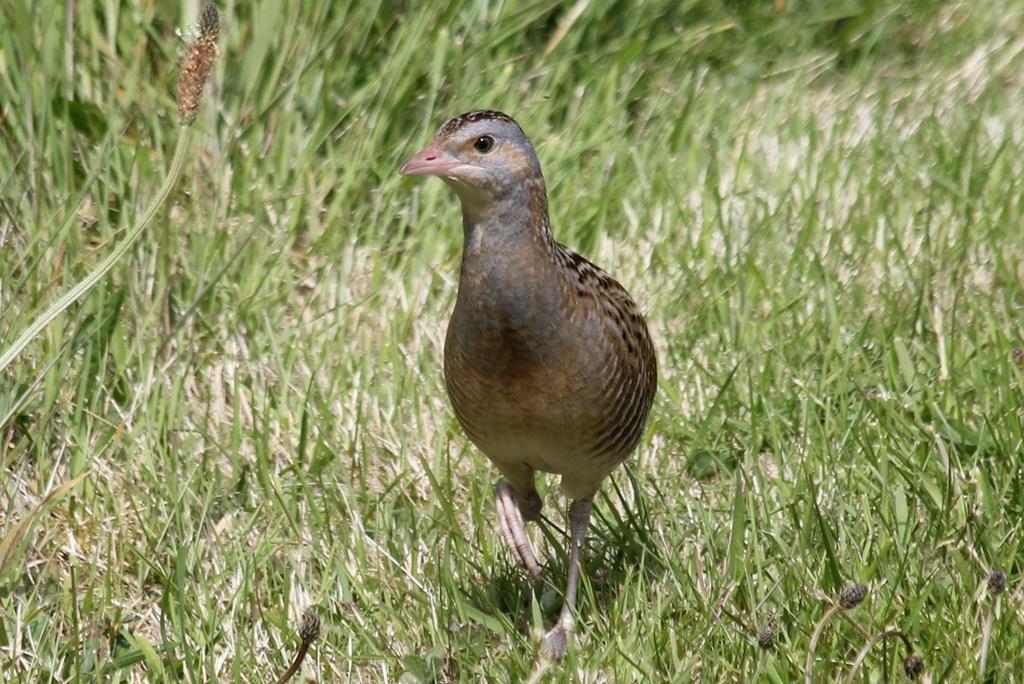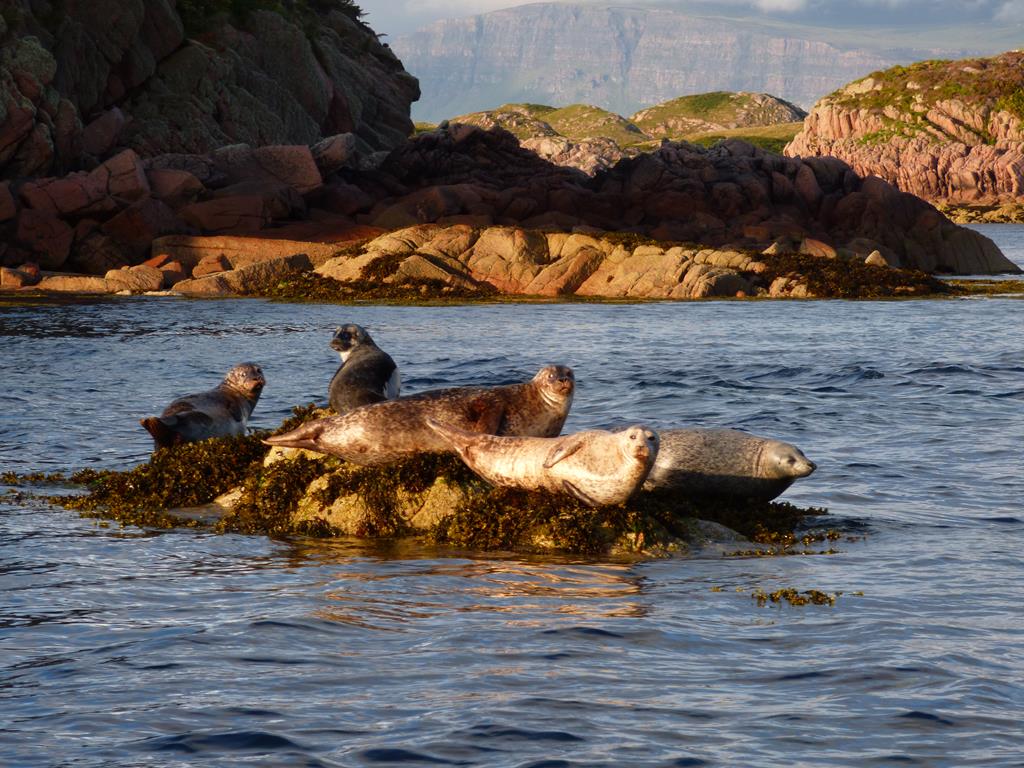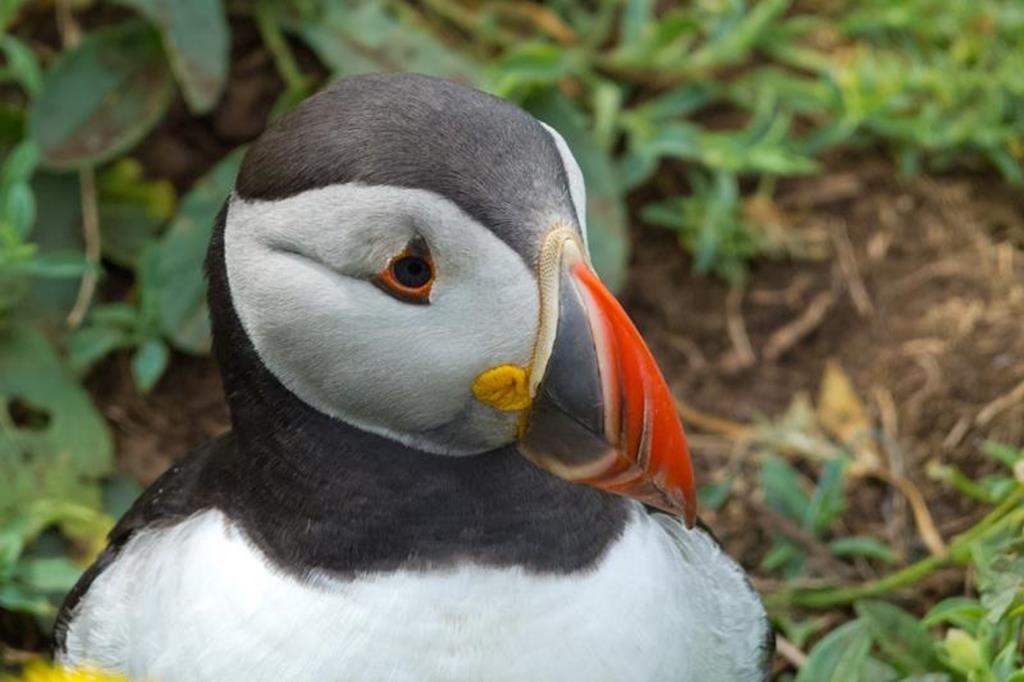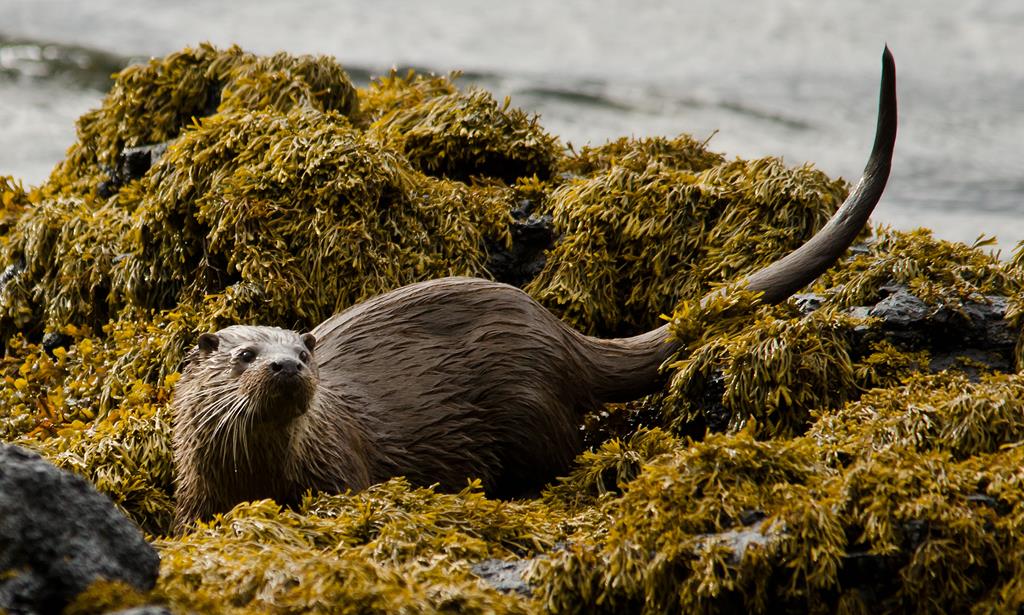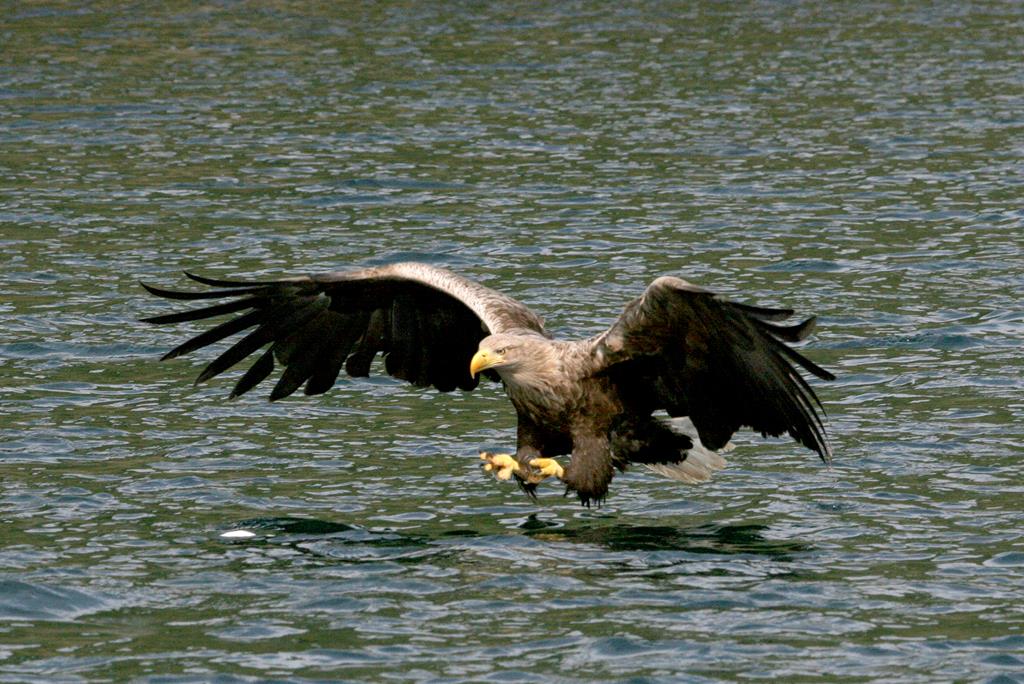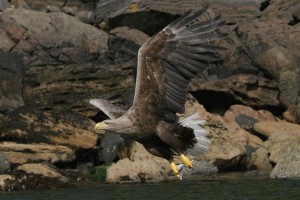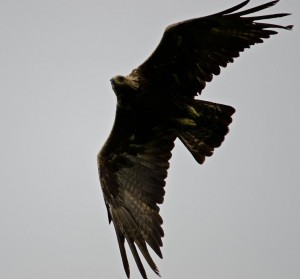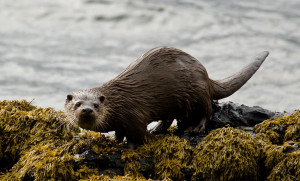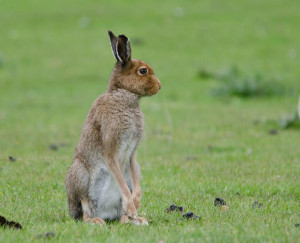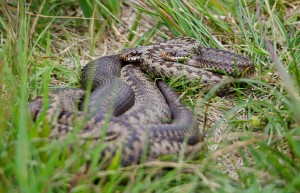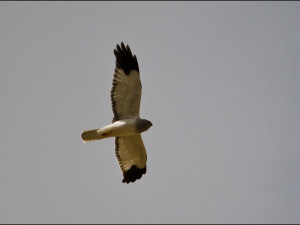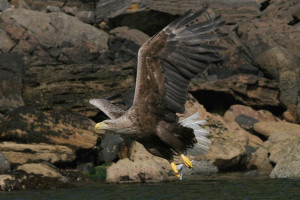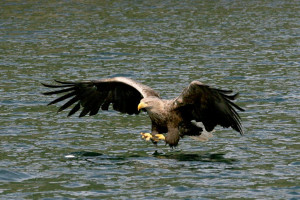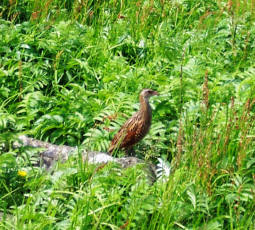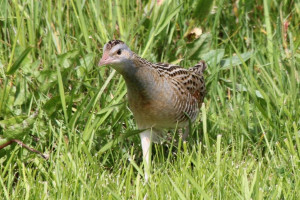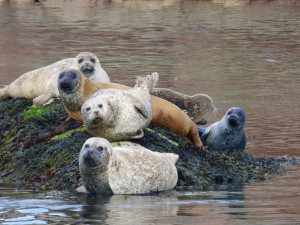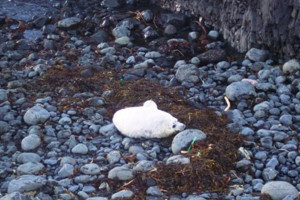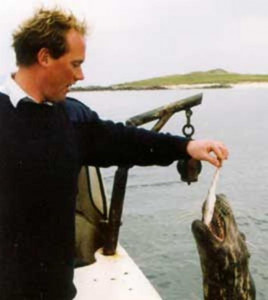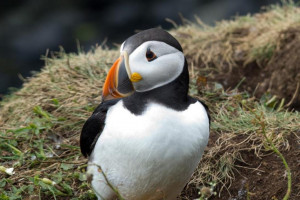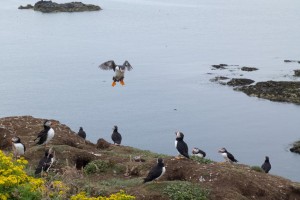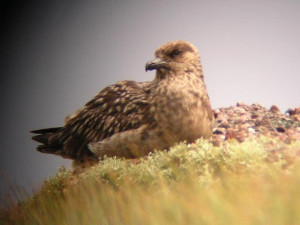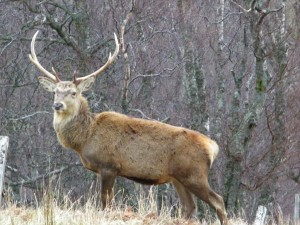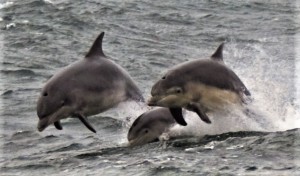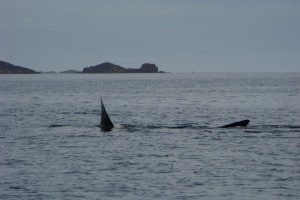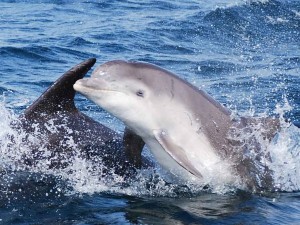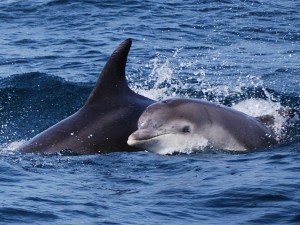Wildlife-Sea eagle, Otter island, Mull, Corncrake fields of Iona and Staffa's Puffins
Wildlife-Mull's Climate and Geography
The island of Mull is unique with its vast diversity and spectacular splendour of its landscape and wild life. The beautiful rugged Hebridean terrain and maritime influences give rise to micro climates on either side of the mountainous centre of the Isle of Mull. On the mountains and to the east of Mull, we have one of the wettest places in Scotland.
On the west coast and particularly on the Ross of Mull (south west peninsula of Mull) and Iona in the spring and summer there are long, sunny, breezy days to allow you to walk the white powder beaches and explore the wonderful natural history on the many coastal walks in the area. Beaches Walks
Click to enlarge images
The Ross of Mull where Seaview is situated has a similar climate to the island of Tiree (20 miles west of Mull) , which is one of the sunniest places in the UK. Below are photographs taken of our resident wild life on Mull accompanied by narrative of some of the animals and birds you are likely to encounter on your travels around the Ross of Mull, as well as on the isles of Iona, Staffa and Lunga. For some of the best photos of wild life and birds on the Ross of Mull have a wee look at Bryan Rains Wild About Mull Facebook click here Bryan updates his facebook pages regularly with some cracking photos.
Eagles on Eagle Island
The Isle of mull is one of the prime locations in the UK to see Eagles
Golden Eagle- (Aquila Chrysaetos)
The Golden Eagle is a large, supremely elegant raptor favouring Mull's remote mountains and crags and is often seen as a dot in the distance soaring over a high ridge. Despite this, its wide slow circling flight is often sufficient to recognise it. A good telescope helps too! In the May to June breeding season the eagles are territorial and are often chased by ravens and crows. The Golden Eagle soars with wings raised in a shallow 'V' shape.
The adult eagle has a dark brown body, tawny to golden crown, heavy feathered legs and a long tail. Juvenile birds have extensive white areas on the wings. Hunting on remote peaks and uplands of Mull, occasionally visiting coastal cliffs, the eagles prey includes crows, mountain hares and rabbits, in winter carcasses of sheep or deer. There are a number of pairs on the Ross of Mull and John can give you an indication of where you are likely to view them.
Wildlife, Sea Eagle - Gaelic: Iolaire-suile-na-grein - 'Eagle with the sunlit eye' (Haliaeetus albicilla)
The Sea Eagle is enormous and is the largest bird in the UK, up to 35% larger than its cousin the Golden
Eagle with a wing span of over 2.5 metres. The foremost and easiest place to see Sea Eagles in the UK is on Mull; there are a number of sea eagles on the south of Mull just a few miles from Seaview. John can advise you on the likeliest place to see them.
On Mull, the sea Eagle usually nests on a the flat crown of a tree, building the nest with a huge pile of sticks. Sea Eagle chicks usually hatch from late April onwards and fly the nest in July or early August.
In south Mull there are a number of pairs who hunt for dead or sick fish from the sea lochs picking them out of the water with their feet. They also eat hares and rabbits. When mating you often see dynamic aerobatics including mid air tumbles. Adult Sea Eagles have heavy striking yellow bills and a large whitish head with a white, short but distinctive fan shaped tail. Its wings are wider and longer than the juvenile. Young Sea Eagles are dark with the white tail and head developing towards maturity at five years of age.
Sea Eagles are rarely far from water, perching on dead trees, rocks by the shore or soaring over a sea loch. They are less wary of humans than golden eagles and can often be seen at fairly close quarters.
Otter on Mull
The Isle of Mull and the Ross of Mull in particular is one of the best places to see the otter - Lutra Lutra or Eurasian Otter. The Gaelic name is Biast Dubh meaning 'black skin or fur'. Unusually the Mull Otter is a day or night hunter and the main influence on it's decision to hunt is the tide.
The otter has a long slim body, a flat skull with powerful jaws, webbed toes, and a rudder like tail used for under water propulsion. Otters can close their The fur is a chestnut brown in colour with a lighter colour on the belly. The otter needs access to fresh water burns to clean their fur. There are two layers of fur; stout waterproof hairs and a thick under layer of fur providing insulation.
An otter's diet comprises of a mixture of fish, crabs, lobster, birds & frogs; the Ross of Mull has many features which are ideal for otter habitat especially the many bays with seaweed and rocks along with the freshwater burns running into the lochs. Over the years John has seen evidence of otters in most areas of the Ross of Mull coastline. The best time to see the Mull otter is usually on an incoming tide from low water towards high water, just offshore where you can watch them swimming in the seaweed or running on the rocks & seaweed. Towards high tide the otters retreat to their holt. There is no guarantee that you will see an otter on any particular day or place - however with patience, perseverance and cunning you just might!
"Wild About Mull" Land based wildlife tour with our resident wildlife expert Bryan Rains
A wildlife land based tour operating locally around Seaview bed and breakfast on the Ross of Mull in the south west corner of the Isle of Mull providing "The Ultimate Wildlife Experience". Your guide and owner Bryan Rains has over 30 years experience in wildlife watching, and although this is now his full time vocation. He is a dedicated and passionate wildlife enthusiast who can often be seen out in his van keeping track of where the birds and animals are in winter in all weathers and on days he has no one booked for a tour.
Bryan's comfortable mini bus can carry a maximum of 8 passengers, he will do the driving and spot the wildlife for you as you enjoy the rugged and scenic Ross of Mull with powder white beaches, wild flowers and a magnificent range of wildlife.
Bryan regularly spots Golden Eagle, white tailed sea eagle, otter and hen harrier, Adder, deer, Mountain Hare and various breeding waders at the appropriate time.
Bryan operates 7 days a week all year round when required Tours start at approximately 9 am from your accommodation and finish around 4.30 pm, Please bring your binoculars if you have any. Bryan will provide telescopes and has some binoculars. With prior arrangement with Bryan you can book a bespoke tour just for you with Wildaboutmull.
A tour can be booked with John at Seaview at the time of reserving your room, ( it is advisable to book early) or directly with Bryan and Joy email: bryan@wildaboutmull.co.uk You can have a look at Bryan's fabulous wildlife photographs on his facebook pages which can be accessed from his website wildaboutmull.co.uk Telphone; 01681704229
A wildlife land based tour operating locally around Seaview bed and breakfast on the Ross of Mull in the south west corner of the Isle of Mull. Your guide and owner Bryan Rains will do the driving and spot the wildlife for you as you enjoy the rugged and scenic Ross of Mull with powder white beaches, wild flowers and a magnificent range of wildlife.
Bryan regularly spots Golden Eagle, white tailed sea eagle, otter and hen harrier, Adder, deer, Mountain Hare and various breeding waders,
RSPB Sea Eagle Hide
The Isle of Mull is the best place in Scotland to see the white-tailed eagle, more commonly known as the sea eagle. It is Britain’s largest bird of prey with a wing span in excess of 8 feet; its poetic Gaelic name is ‘Iolaire-suile-na grein’ which translates to ‘the eagle with the sunlit eye’. They are regularly seen in flight from public roads throughout the island.
We are very fortunate to have the 5 star VisitScotland Visitor Attraction RSPB Sea Eagle hide at this end of the island - just across Loch Scridain from Pennyghael at Glen Seilisdair on the B8035 Grid Reference 48000 30288. To visit the Sea Eagle Viewing Point at Glen Seilisdeir (pronounced Shellister - which means Glen of the Irises), you will need to book your place which operates on a first come-first served basis of up to 20 people for a ranger led visit. For further information and to book your place contact Craignure visitor center (01688) 812566. or ask us to make a booking in advance of your stay with us.
We are approximately 20 miles from the hide and on your drive from Seaview to the hide you take in magnificent scenery while keeping a look out for golden eagles, otters, owls, red deer. Great Northern Diver and hen harriers and many other species. The meeting point is sign posted with Forestry Commission signs. A great day out.Ranger Trips are Monday to Friday, 2 trips per day, lasting approximately 2 hours. You can leave early if you wish. Times 10am to 12.30pm and 1.30pm to 4pm. You can request out of hours trips for groups.
Calender- April:Adults sitting on eggs, May-July:chicks in nest adults feeding them August:chicks fledged but flying in the area.
The trip costs £8 adult (including RSPB members) £4 child £20 family ticket for 4 Pay guide on day, money goes to good causes locally.
There are no toilets on site. Well behaved dogs on lead welcome, Please bring waterproofs, midge repellent, binoculars etc. There are good telescopes on site for your use.We are happy to help and advise you with regard to other wild life tour operators on the island.
© Photo taken and permission kindly given by guest Mike Ashforth
The Elusive Corncrake on Iona
The corncrake Garra-Thegart in Gaelic is from the same family as the moorhen or coot but differs in that it prefers dry land. Although scarce, the corncrake is making a comeback on the Scottish Islands, especially on Iona and here on the Ross of Mull (Fidden), due to the farmers cutting the hayfields later in the season. This allows the corncrake to breed without being disturbed. The Isle of Iona in particular has seen an increase in the numbers of corncrake and they are now spreading outwards to Fidden and Creich on the Ross of Mull. All these locations are easily accessible from Seaview. There are also corncrakes on the Treshnish Isles.
The corncrake arrives from mid April onwards from as far away as Africa crossing the Sahara desert enroute to the western isles of Scotland and then leaves again in August. In flight the corncrakes bright chestnut coloured wings and trailing legs are unmistakeable. They nest in hollows at ground level in the reeds, iris beds and meadows. Generally a solitary bird except when nesting it is reclusive and secretive hiding in tall reeds, grass and yellow iris in damp areas in fields around Iona village and Abbey. The corncrake's presence is betrayed by a rasping 'crek crek' call (which sounds like a very loud grasshopper!) and by May and June they are heard in the very early morning and evening throughout Iona. You are more likely to hear them than see them, but if you are patient enough and are prepared to sit and wait you will be rewarded with a sighting.
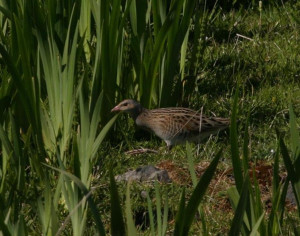 Don't take the car - you can't on Iona anyway, but listen! listen! listen! Once you have identified the area the call is coming from, then watch! watch! watch!. Silence and patience is the key to success. The first photograph of the corncrake was taken by Jane in the summer of 2005 when she was on Lunga. At the time Jane was returning to the boat and whilst coming down the path towards the beach she could hear this very loud rasping grasshopper sound coming from the tall grass and undergrowth nearby..............and then as bold as you like a corncrake appeared and continued to make this awful racket. Not quite believing her luck, Jane captured the bird on camera by simply pointing the camera and clicking away whilst gently walking towards it, hoping that at least one of the photographs would come out clear enough to prove she had seen and not just heard this rather elusive bird! Talk about beginner's luck!
Don't take the car - you can't on Iona anyway, but listen! listen! listen! Once you have identified the area the call is coming from, then watch! watch! watch!. Silence and patience is the key to success. The first photograph of the corncrake was taken by Jane in the summer of 2005 when she was on Lunga. At the time Jane was returning to the boat and whilst coming down the path towards the beach she could hear this very loud rasping grasshopper sound coming from the tall grass and undergrowth nearby..............and then as bold as you like a corncrake appeared and continued to make this awful racket. Not quite believing her luck, Jane captured the bird on camera by simply pointing the camera and clicking away whilst gently walking towards it, hoping that at least one of the photographs would come out clear enough to prove she had seen and not just heard this rather elusive bird! Talk about beginner's luck!
Seals on Mull
The Common Seal Phocca Vitulina and the Grey or Atlantic Seal Halichoerus grypus are found around the coastline of Mull and the surrounding remote islands.
The Common Seal has a blunt or flattish head, while the Grey Seal has a more pronounced nose or snout. The Common Seal have their young in the summer, and the Grey Seals have their white furry pups in the autumn. The seals you usually see basking on the rocks around the Ross of Mull at Fidden, Erraid and Red Bay are Common Seals. John is able to help you in locating and viewing the seals. Common Seals are well camouflaged for their environment living ashore in sheltered waters around the Ross of Mull. The young seal pups are born in July/July and have sleek coats and flippers; within a coupe of hours they are able to swim and for a couple of months swim close to their mother.
Sammy the seal, an old fat seal with a scar across its back is resident at Fionnphort pier and is fed by local fishermen. He waits until he hears the fishing boats coming in, either to moor up for the day or to land their catch and then Sammy makes his appearance. He has become a great summer attraction for visitors old and young alike. This photograph shows John feeding Sammy some 'Fingal's Breakfast' many summers ago. When we last saw Sammy he was accompanied by a 'friend' but we don't know if it was male or female. Either way Sammy is obviously passing on his knowledge of 'fishing'
Grey Seals, during birth and breeding times generally come together in the offshore islands around the Ross of Mull and Treshnish isles in September through to November. Three weeks after giving birth the females conceive again. The mothers come ashore during this time to feed the beached white furry pups. In this time the pup puts on an enormous amount of weight due to the rich milk. The pup then quickly fends for itself, learns to swim, and loses it white fur quickly developing its adult sea going coat.
The Puffin
Puffins are members of the Auk family or Alcidae. Fratercula Artica. In Britain there are three other members of this family who nest around our shores - the Guillemot, Razorbill and Black Guillemot. The puffin that visits us here on Staffa and the other Treshnish Isles is the Atlantic Puffin. Gaelic- "Peata Ruadh"
This wee fella, is about 30 cm tall and has a wing span of about 45 cm; it is black above and white below with a white face; the plumage is similar for both male and female. The bill is spectacular - brightly coloured and ridged in summer, orange, red, yellow and blue. The eye is brown and surrounded by a bright red ring; above and below the eye are hard pieces of grey skin and behind the eye is a distinct crease in the feathers. The legs and feet are red with black toenails.
The Puffin walks in an upright position which gives it a Penguin like stance and it is adept at swimming under water, using its wings half folded. The wings are small for the size and weight of the bird and this means that Puffins have to flap very fast, between 300-400 beats a minute, to keep themselves airborne.
Puffins are expert at gliding into high winds on the cliffs and manoeuvre using their feet as rudders - they are not particularly graceful at landing, very often crash landing into the scrub on the cliffs.
In the winter, the plumage is quite different - much less colourful, but as they are far out to sea in the winter months they are rarely observed. The Puffins return to land in late March or early April. Puffin colonies can be on flat grassy topped islands or cliff tops, grassy slopes, vegetated cliffs and even in crannies and among boulders. The islands around Mull are in fact ideal nesting sites. Puffins nest underground, unlike their cousins the Razorbills and Guillemots. They excavate a burrow, approximately 2 metres long, a bit like a rabbit burrow and at the end is the nesting chamber where they lay a single white egg. Many of the burrows are used year after year and as long as they return early and have survived the winter, the same pair of Puffins tend to come back to the same burrow. At other times, a new pair must excavate a fresh burrow in the cliff, usually at the edge of a large colony. Puffins are skilled miners: they have sharp powerful bills which pull at the soil and turf and the claws on their bright red feet are extremely strong and sharp. It takes many days to dig a new burrow so new pairs are keen where possible to use unoccupied burrows.
Puffins often nest near rabbits - sometimes they take over rabbit burrows. As burrows are being refurbished or new burrows excavated, display among the Puffins increases daily. The pair are together nearly all of the time; the male is slightly bigger and his bill is larger, brighter and ore distinctly ridged. The main display between the pair is billing and cooing with the birds touching bills and gently nibbling each other's head and neck feathers.
Mating takes place on the sea after the male has goner through a ritual of head flicking and wing fluttering. A single egg is laid in the nest chamber and is incubated by both parents which lasts between 38-43 days. Puffins coming ashore with fish in their bills are the first signs that the eggs have begun to hatch.
The chick is very small on hatching and is covered with fluffy black down. In the early days the chick is brooded by one of the parents to keep it warm and dry but is soon left unattended as both parents go out to sea fishing. The chick is fed in the nest to start with but at a couple of weeks old it starts to meet its parents at the mouth of the burrow. Chicks grow rapidly and at six weeks old it is fully feathered; at this time the chick starts to come out of the burrow at night and then finally one night at about 7 weeks it leaves the burrow altogether and flies out to sea.
photographs taken by John & Jane Noddings, Michela Bentizin Roger Morgan and Bryan Rai
Deer
There are three species of deer on Mull - red, roe deer and fallow deer. The most common of the three species you are likely to see is the red deer - these are quite active at dusk and dawn as they come down from the hills to graze in more open land; during the winter months the deer come down from the mountains to forage on the lower ground and you are very likely to see them whilst driving through Glen More.
Red Deer(Cervus elaphus)
The Red Deer is the largest land-mammal in the UK. Summer coat is reddish brown to brown, winter coat is brown to grey. No spots present in adult coat. Large, highly branched antlers in the stag (male). Adult size: Stags 90-190kg, 107-137cm at shoulder. Females (hinds) 63-120kg, up to 107-122cm at shoulder. Antlers: Highly branched. The number of branches increases with age. Up to 16 points in native animals. The angle between the brow tine and the main beam is always more than 90 degrees.
Life span: Exceptionally up to 18 years. Heavy infant mortality at and shortly after birth and during first winter in some Scottish hill populations. Habitat: Within its range in England and southern Scotland occurs in woodlands and forests but can adapt to open moor and hill on Scottish hills and south-west England. Food & feeding: Grazers of grasses, and dwarf shrubs e.g. heather and bilberry. Woody browse, e.g. tree shoots, is taken when other food is limiting e.g. during winter
In woodlands red deer are largely solitary or occur as mother and calf groups. On open ground, larger, single sex groups assemble, only mixing during the rut and in the Highlands of Scotland large groups may persist for most of the year. Stags roar and grunt during the rut. Hinds bark when alarmed and moo when searching for their young. Calves emit a high-pitched squeal when alarmed and may bleat to their mother.
The rut: The breeding season, or rut, occurs from the end of September to November. Stags return to hind's home ranges and compete for access to hinds by engaging in elaborate displays of dominance including roaring, parallel walks and fighting. Serious injury and death can result but fighting only occurs between stags of similar size that can not assess dominance by any of the other means. The dominant stag then ensures exclusive mating with the hinds.
Only stags over 5 years old tend to achieve matings despite being sexually mature much earlier (before their 2nd birthday in productive woodland populations). In woodland populations hinds over a year old give birth to a single calf after an 8 month gestation, between mid-May to mid-July each year. Puberty may be delayed until 3 years old in hill hinds, which may give birth only once every 2 or 3 years.
Red deer are active throughout the 24-hour period but make more use of open spaces during the hours of darkness in populations experiencing frequent disturbance. Peak times of activity are at dawn and dusk. In the Highlands of Scotland red deer use the open hill during the day and descend to lower ground during the night.
Grazing of tree shoots and agricultural crops puts red deer in conflict with farmers and foresters due to economic damage. Conversely, many country and forest estates can gain substantial revenue from recreational stalking and/or venison production. Red deer are also farmed for their venison and are kept as ornamental park species in the UK. Whether in conflict or used as a resource, red deer populations require careful management to maintain health and quality and ensure a sustainable balance with their environment.
Whales Dolphins and Porpoises around our shores
This information has been provided directly from the website of the Hebridean Whale and Dolphin Trust which is a small charity based in Tobermory at the north end of the island. The Trust employ several members of staff and volunteers who conduct research, provide education and carry out important conservation work of several of our cetaceans found around the shores of the west coast of Scotland.
The Boat trips leaving Fionnphort Pier to the Isles of Staffa and Lunga in the summer see these mammals on their voyage. boat trips and tours read more
Whales, dolphins and porpoises belong to a single group of marine mammals called the cetaceans ( Cetacea). The word cetacean comes from the Latin ‘cetus’ meaning large sea creature, and the ancient Greek ‘ketos’ meaning sea monster. Cetaceans are marine mammals that evolved from their land mammal ancestors around 55 - 60 million years ago and have adapted perfectly to an aquatic life during this time. There are currently about 83 species of whale, dolphin and porpoise in the world, but new species are still being discovered; 24 of these have been recorded in the waters off western Scotland.
Cetaceans are mammals that are insulated by a thick layer of blubber (fat) in order to maintain a body temperature of about 37°C. They surface to breathe air through their blowholes, which close automatically below water. Most species have a dorsal (back) fin, ranging from a small bump on a sperm whale to a tall killer whale fin; all species have two pectoral (side) fins and a fluke (tail).
Cetaceans are divided into two groups:
Odontocetes – the toothed cetaceans, containing about 70 species of whale, dolphin and porpoise. As well as teeth, all species have a single blowhole. Odontocetes use echolocation to find food and to navigate. The most numerous family is the Delphinidae, which includes all of the oceanic dolphins. Mysticetes – the baleen cetaceans, containing about 13 species. Instead of teeth, all species have baleen plates growing from their upper jaw which sieve prey such as small schooling fish and plankton from the water. Baleen is made from keratin, the same substance as human hair and fingernails. Mysticetes have two blowholes and are not known to echolocate.
Cetaceans and Sound
Migration
Whales and Dolphins | The Isle of Mull Whales and Dolphins Isle of Mull
All cetaceans make daily movements in order to find food. Some of the species seen in the Hebrides, including the bottlenose dolphin and the harbour porpoise, are believed to be resident all year round and occupy a range along the west coast of Scotland. Others make seasonal migrations between warm water breeding grounds and cold water feeding grounds. Minke whales and common dolphins, amongst other species, are frequently seen off western Scotland between May and September taking advantage of the abundant fish. Occasionally humpback whales are seen in Hebridean waters; these whales are known to make one of the longest seasonal migrations between breeding grounds off Africa to feeding grounds around Iceland and Norway.
Cetaceans are able to dive to great depths for extended periods to hunt for food. Sperm whales can dive to depths of 2500 metres for up to two hours. They are able to store huge amounts of oxygen in their blood and muscles, and divert oxygen to the brain and heart. The lungs actually collapse under great pressure during a deep dive; some whales are thought to suffer from ‘the bends’ (decompression illness) if they surface too rapidly.
Reproduction
Mammals, cetaceans give birth to live young following a gestation period of between 8 and 16 months. A single calf is born tail first and must be lifted to the surface by its mother to breathe. Cetaceans are social animals and other females may offer assistance in lifting, protecting and even feeding newborn calves. Feeding on a fat-rich, nutritious milk, growth is very fast. For example, a newborn blue whale consumes more than 100 litres of milk per day and grows from roughly seven metres at birth to 15 metres at seven months of age. Calves stay close to their mothers, and will suckle for anywhere between several months to several years, depending on the species and the environmental circumstances. For cetaceans in general, low reproductive rates are offset by relatively long life spans and high survivorship of calves due to intensive parental care.
Cetaceans are well-adapted to a life beneath the waves having evolved for millions of years from land mammal ancestors. The body is streamlined to reduce drag and energy usage; external features including the ears and reproductive organs are tucked inside the body behind slits; cetaceans have no hind limbs although some vestigial bone fragments of the pelvis and legs can remain. Unlike land mammals, cetaceans have do not have hair (although some species may have a couple of facial whiskers) or fur coats because this would further increase drag. They are instead covered in a thick layer of blubber to keep them warm in the cold sea. Their fore-flippers have a bone structure similar to a human hand, but bones are elongated and webbed with skin to help with swimming.
The dorsal fin aids stability in the water and the tail provides powerful propulsion by beating up and down. The nasal openings have migrated to the top of the head to form one or two blowholes to make it easier to breathe at the surface.
reserve room reserve room by mobile
Updated 1 February 2019
Seaview 2000-2019

